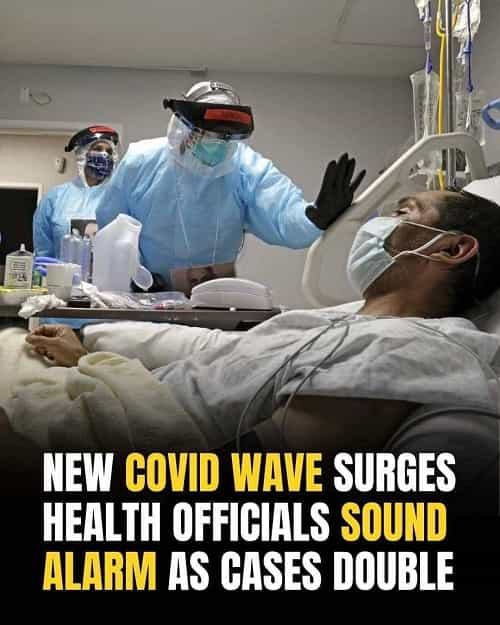Blinded by the Light? 90% of Drivers Say LED Headlights Are Just Too Much
Modern vehicles often feature LED headlights, which are praised for their energy efficiency and modern appearance. However, these lights have caused rising anxiety among drivers, with almost 90% thinking they are excessively bright, posing a considerable hazard.
This widespread view has fueled discussions on balancing technological progress and road safety. While LEDs have benefits, their intense brightness can temporarily impair the vision of oncoming drivers, leading to concerns if they improve or worsen road safety.
The Ascent of LED Headlights
LED headlights have become the benchmark in automotive lighting, replacing halogen bulbs in numerous new automobiles. Their appeal is due to energy efficiency, long life, and a focused beam for improved visibility. LEDs convert energy into light more efficiently than halogen bulbs, which waste energy as heat, making them eco-friendly. This innovation has changed vehicle aesthetics and reduced energy consumption.
LED technology provides a brighter, more natural light that resembles daylight. This helps drivers see obstacles, read signs, and navigate in low-light areas. Furthermore, the compact size of LED bulbs allows automakers to create streamlined, futuristic headlight shapes that improve car appeal.
Despite these advantages, the transition to LED headlights has sparked debate. While they improve visibility for the driver, their intensity has worried other road users. The sharper, more focused light, frequently angled higher, can produce glare for oncoming drivers. This has led to concerns about whether LED headlights’ benefits outweigh the risks to overall road safety.

Why Drivers Perceive LED Headlights as Too Bright
The perception that LED headlights are too bright is justified. LED lights emit more lumens, which measure visible light intensity, than halogen bulbs. While this brightness improves visibility, it can cause glare, especially for oncoming traffic. The focused beam pattern of LEDs, which concentrates light instead of dispersing it, exacerbates this.
The color temperature of LED lights also contributes to discomfort. LEDs often produce a cooler, bluish light that resembles daylight. While this may help drivers, it can be harsh for others. Studies reveal that blue-rich light scatters more in the eye, increasing discomfort and temporary blindness. This scattering is more noticeable at night when eyes are more sensitive to intense light.
The issue involves poor alignment and regulation, not just brightness. Misaligned LED headlights can intensify glare, making it difficult for oncoming drivers to see. The problem has grown as more cars use these lights without standardized adjustments, making drivers feel vulnerable.
Safety Ramifications of Excessively Bright Headlights
The safety risks of excessively bright headlights are substantial and well-documented. Temporary blindness, or “disability glare,” is a major danger. It occurs when intense light overwhelms the eye’s ability to adjust. Even a brief loss of vision can slow reaction times, making it harder to react to unexpected events like a pedestrian crossing or an animal on the road.
This is more dangerous on two-lane highways where oncoming traffic is closer, and there is less time to adjust to the glare. Bright LED headlights can disorient drivers, raising the risk of head-on crashes. Studies have revealed that excessively bright headlights contributed to accidents, particularly in rural regions where drivers have limited vision. Rain or fog can worsen the glare by reflecting light back into the driver’s eyes.
Pedestrians and cyclists are also at risk. Bright headlights can obscure non-motorized road users, making them harder to see. This raises worries about LED lighting’s broader consequences, not just for drivers but for everyone on the road. While LED technology has revolutionized car lighting, its unintended safety consequences highlight the necessity for improved regulation and thoughtful implementation.
Read more:If You Rely on Evening Wine to Relax, You May Display These 7 Habits Without Realizing It
Regulatory Standards and Industry Reaction
Headlight brightness regulations vary, resulting in inconsistent enforcement that has worsened the issue. While certain regions have maximum brightness standards in lumens or lux, these standards vary by country. This inconsistency makes it difficult for automakers to adhere to a jumble of regulations while meeting consumer demand for brightness.
Some manufacturers have begun adding adaptive lighting systems to address these issues. These systems employ sensors to detect oncoming cars and automatically adjust the beam angle or intensity to minimize glare. While promising, this technology is still a luxury feature in many cases. It is uncertain whether these systems can effectively address misaligned headlights and excessive brightness in all driving conditions.
Advocacy for stronger regulation has grown alongside industry initiatives. Safety experts advocate for stricter testing and certification to guarantee LED headlights meet brightness, alignment, and beam pattern requirements. Governments and industry leaders must develop clearer safety regulations without stifling innovation. This balance is vital to addressing driver concerns while maintaining LED technology’s benefits.
Expert Perspectives and Solutions
Automotive safety and optometry specialists have examined the issues caused by excessively bright LED headlights. Optometrists emphasize the strain that intense light can put on the eye, especially while driving at night when pupils are dilated. Sudden exposure to a bright beam can cause pain and temporary vision impairment, known as glare recovery time. This is especially problematic for older drivers, whose eyes take longer to adapt to changes in brightness.
Automotive safety experts highlight the significance of appropriate headlight design and alignment in mitigating these dangers. Even the most sophisticated lighting technologies can become hazards if improperly installed. A poorly aimed LED headlight, for example, may shine light directly into the eyes of oncoming drivers, increasing glare and decreasing road safety. These experts advocate for mandatory headlight alignment inspections to ensure safety compliance.
Potential solutions go beyond regulations and technical fixes. Some experts advise drivers to use anti-glare accessories, such as polarized glasses, to lessen the impact of bright headlights on their vision. Public awareness campaigns can also educate drivers on the importance of proper headlight use, such as dimming high beams when approaching other vehicles. Addressing this multifaceted issue requires coordinated efforts from legislators, manufacturers, and the driving community.
Steps Drivers Can Take
Drivers who have trouble with excessively bright headlights can take numerous measures to protect themselves and improve road safety. One of the most basic yet effective measures is to ensure that their car’s mirrors are properly adjusted. Tilting the rearview mirror downward can prevent glare from headlights behind from shining directly into the driver’s eyes, while side mirrors should be angled to reduce glare from passing vehicles.
Anti-glare lenses, available with or without a prescription, are also beneficial. These lenses reduce the intensity of bright lights, providing clearer vision when driving at night. They are especially beneficial for people who drive on highways or in rural areas with bright LED headlights. Drivers can also use windshield treatments to reduce light scatter and improve clarity.
Adopting defensive driving habits is also crucial. Keeping a safe distance from cars with excessively bright headlights can lessen their impact. When approaching oncoming traffic, focus on the road’s right edge rather than the headlights to reduce glare. These changes can assist drivers in navigating the challenges of bright LED headlights while remaining safe.
Balancing Road Brightness and Safety
The advent of LED headlights signifies a major improvement in automotive technology, providing enhanced visibility and energy efficiency. However, their intense brightness has raised road safety concerns, with nearly 90% of drivers believing they are excessively bright and potentially dangerous. The problems presented by these lights, ranging from temporary blindness to increased accident risks, emphasize the necessity for balanced solutions that consider innovation and safety.
Addressing this issue necessitates a multifaceted strategy. Manufacturers must continue to innovate with adaptive lighting while ensuring regulatory compliance. Policymakers should strive for more consistent and enforceable rules, and drivers can use practical measures to reduce the impact of excessively bright lights. We can create safer roads for everyone while preserving the benefits of cutting-edge technology by prioritizing collaboration and awareness.
This widespread view has fueled discussions on balancing technological progress and road safety. While LEDs have benefits, their intense brightness can temporarily impair the vision of oncoming drivers, leading to concerns if they improve or worsen road safety.
The Ascent of LED Headlights
LED headlights have become the benchmark in automotive lighting, replacing halogen bulbs in numerous new automobiles. Their appeal is due to energy efficiency, long life, and a focused beam for improved visibility. LEDs convert energy into light more efficiently than halogen bulbs, which waste energy as heat, making them eco-friendly. This innovation has changed vehicle aesthetics and reduced energy consumption.
LED technology provides a brighter, more natural light that resembles daylight. This helps drivers see obstacles, read signs, and navigate in low-light areas. Furthermore, the compact size of LED bulbs allows automakers to create streamlined, futuristic headlight shapes that improve car appeal.
Despite these advantages, the transition to LED headlights has sparked debate. While they improve visibility for the driver, their intensity has worried other road users. The sharper, more focused light, frequently angled higher, can produce glare for oncoming drivers. This has led to concerns about whether LED headlights’ benefits outweigh the risks to overall road safety.

Why Drivers Perceive LED Headlights as Too Bright
The perception that LED headlights are too bright is justified. LED lights emit more lumens, which measure visible light intensity, than halogen bulbs. While this brightness improves visibility, it can cause glare, especially for oncoming traffic. The focused beam pattern of LEDs, which concentrates light instead of dispersing it, exacerbates this.
The color temperature of LED lights also contributes to discomfort. LEDs often produce a cooler, bluish light that resembles daylight. While this may help drivers, it can be harsh for others. Studies reveal that blue-rich light scatters more in the eye, increasing discomfort and temporary blindness. This scattering is more noticeable at night when eyes are more sensitive to intense light.
The issue involves poor alignment and regulation, not just brightness. Misaligned LED headlights can intensify glare, making it difficult for oncoming drivers to see. The problem has grown as more cars use these lights without standardized adjustments, making drivers feel vulnerable.
Safety Ramifications of Excessively Bright Headlights
The safety risks of excessively bright headlights are substantial and well-documented. Temporary blindness, or “disability glare,” is a major danger. It occurs when intense light overwhelms the eye’s ability to adjust. Even a brief loss of vision can slow reaction times, making it harder to react to unexpected events like a pedestrian crossing or an animal on the road.
This is more dangerous on two-lane highways where oncoming traffic is closer, and there is less time to adjust to the glare. Bright LED headlights can disorient drivers, raising the risk of head-on crashes. Studies have revealed that excessively bright headlights contributed to accidents, particularly in rural regions where drivers have limited vision. Rain or fog can worsen the glare by reflecting light back into the driver’s eyes.
Pedestrians and cyclists are also at risk. Bright headlights can obscure non-motorized road users, making them harder to see. This raises worries about LED lighting’s broader consequences, not just for drivers but for everyone on the road. While LED technology has revolutionized car lighting, its unintended safety consequences highlight the necessity for improved regulation and thoughtful implementation.
Read more:If You Rely on Evening Wine to Relax, You May Display These 7 Habits Without Realizing It
Regulatory Standards and Industry Reaction
Headlight brightness regulations vary, resulting in inconsistent enforcement that has worsened the issue. While certain regions have maximum brightness standards in lumens or lux, these standards vary by country. This inconsistency makes it difficult for automakers to adhere to a jumble of regulations while meeting consumer demand for brightness.
Some manufacturers have begun adding adaptive lighting systems to address these issues. These systems employ sensors to detect oncoming cars and automatically adjust the beam angle or intensity to minimize glare. While promising, this technology is still a luxury feature in many cases. It is uncertain whether these systems can effectively address misaligned headlights and excessive brightness in all driving conditions.
Advocacy for stronger regulation has grown alongside industry initiatives. Safety experts advocate for stricter testing and certification to guarantee LED headlights meet brightness, alignment, and beam pattern requirements. Governments and industry leaders must develop clearer safety regulations without stifling innovation. This balance is vital to addressing driver concerns while maintaining LED technology’s benefits.
Expert Perspectives and Solutions
Automotive safety and optometry specialists have examined the issues caused by excessively bright LED headlights. Optometrists emphasize the strain that intense light can put on the eye, especially while driving at night when pupils are dilated. Sudden exposure to a bright beam can cause pain and temporary vision impairment, known as glare recovery time. This is especially problematic for older drivers, whose eyes take longer to adapt to changes in brightness.
Automotive safety experts highlight the significance of appropriate headlight design and alignment in mitigating these dangers. Even the most sophisticated lighting technologies can become hazards if improperly installed. A poorly aimed LED headlight, for example, may shine light directly into the eyes of oncoming drivers, increasing glare and decreasing road safety. These experts advocate for mandatory headlight alignment inspections to ensure safety compliance.
Potential solutions go beyond regulations and technical fixes. Some experts advise drivers to use anti-glare accessories, such as polarized glasses, to lessen the impact of bright headlights on their vision. Public awareness campaigns can also educate drivers on the importance of proper headlight use, such as dimming high beams when approaching other vehicles. Addressing this multifaceted issue requires coordinated efforts from legislators, manufacturers, and the driving community.
Steps Drivers Can Take
Drivers who have trouble with excessively bright headlights can take numerous measures to protect themselves and improve road safety. One of the most basic yet effective measures is to ensure that their car’s mirrors are properly adjusted. Tilting the rearview mirror downward can prevent glare from headlights behind from shining directly into the driver’s eyes, while side mirrors should be angled to reduce glare from passing vehicles.
Anti-glare lenses, available with or without a prescription, are also beneficial. These lenses reduce the intensity of bright lights, providing clearer vision when driving at night. They are especially beneficial for people who drive on highways or in rural areas with bright LED headlights. Drivers can also use windshield treatments to reduce light scatter and improve clarity.
Adopting defensive driving habits is also crucial. Keeping a safe distance from cars with excessively bright headlights can lessen their impact. When approaching oncoming traffic, focus on the road’s right edge rather than the headlights to reduce glare. These changes can assist drivers in navigating the challenges of bright LED headlights while remaining safe.
Balancing Road Brightness and Safety
The advent of LED headlights signifies a major improvement in automotive technology, providing enhanced visibility and energy efficiency. However, their intense brightness has raised road safety concerns, with nearly 90% of drivers believing they are excessively bright and potentially dangerous. The problems presented by these lights, ranging from temporary blindness to increased accident risks, emphasize the necessity for balanced solutions that consider innovation and safety.
Addressing this issue necessitates a multifaceted strategy. Manufacturers must continue to innovate with adaptive lighting while ensuring regulatory compliance. Policymakers should strive for more consistent and enforceable rules, and drivers can use practical measures to reduce the impact of excessively bright lights. We can create safer roads for everyone while preserving the benefits of cutting-edge technology by prioritizing collaboration and awareness.
 Top Amazing Channel
Top Amazing Channel



